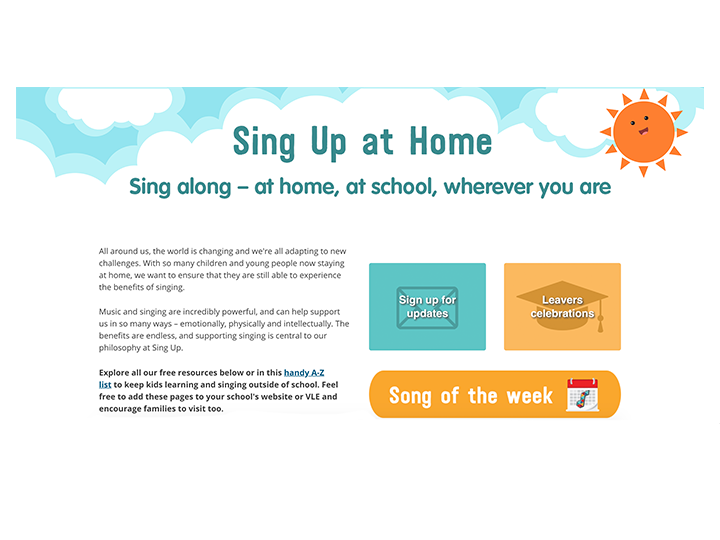
A history of wellbeing
If you’re reading this magazine, the chances are that you sing. You may have been singing for as long as you can remember, you may have made a return to singing or you may be new to it. Whatever your reason, you probably find that you generally feel better after you’ve been singing. The improvements to mood, energy levels and a general sense of wellbeing after singing have been noted for hundreds of years.
On one level, we don’t need to ask why – it’s obvious that there are social benefits that come with the shared goals of group singing. The music and words that we sing come from an abundant wealth of repertoire from numerous countries, cultures, periods of history, religions and political systems: it represents our human journey for hundreds of years. Health benefits are also plentiful; breathing together we express our emotions with one voice.
Why does singing make us feel better?
It has been shown that singing has a considerable effect on raising both endorphin and oxytocin levels in the blood. Endorphins contribute to a general sense of wellbeing as well as giving us higher resistance to pain levels. Oxytocin, known as the love hormone, is not just limited to women in childbirth and breastfeeding. Higher levels are found in couples in the first six months of their relationship and in athletes engaged in synchronised team activity such as rowing. And it’s found in choral singers who all breathe together and sing together.
So now we know that the positive feelings are actually measurable, we can ask why this might happen? Why would singing in groups be such a beneficial activity?
When did singing begin?
In order to answer this, we need to go back in time and look at early human species. Primates rely on social bonding to foster cooperation and trust. For this, monkeys and apes form intense bonds with physical grooming. Grooming is time-costly though, and so groups that rely on this have sizes limited to a maximum of 50 or 60 members. Why would early humans have benefitted from larger groups, and how did they go about this?
By looking at brain size in humans over time we have a good indication of when significant changes were made in the size of groups. So, how did they manage to do this: physical grooming takes time and primates need to spend the majority of their waking time finding food. There must have been other ways to bring individuals together and to feel a sense of social cohesion.
There are three probable ways in which early humans managed to extend their group size. One of the first was laughter, which is shared with chimpanzees, possibly from about two million years ago. Laughter comes from a deeper part of the brain than other communications. Observing amusing behaviour and sharing a giggle about it can help to build empathy and trust.
With the evolution of early humans there appear to be two significant leaps in brain and therefore group size. The first was about 500,000 years ago; the second came about 200,000 years ago. There are some clues amongst skeletal remains that indicate that, at the time of the first leap in brain size, early humans had a lower larynx, more control of breathing and a more sophisticated nerve supply to the tongue. These all point towards some sort of controlled vocal activity. At this time, there were no traces at all that would point towards the use of language. We can therefore surmise that these attributes allowed us to raise our voices together in wordless song: grooming at a distance.
Another benefit of chorusing is to appear larger and stronger as a group, which would have been a powerful advantage in the hours of darkness. There must have been some evolutionary benefit for those individuals who not only sang together, but also produced feel-good hormones when they did.
About 200,000 years ago we have evidence of symbolism, religion and ritual, which is linked to speech and language. This next leap in brain size and therefore group size was thanks to storytelling, which links in with the first identifiable remains of Homo sapiens. So, singing follows on from laughing and predates speaking.
Ritual song
Singing is an integral part of all our rituals and celebrations. The important points in our seasonal calendar, as well as occasions through our lifetime are all accompanied by song. Feast days have been absorbed into religious calendars, and they all have traditions of singing as central to the events. Weddings, funerals and birthdays all have their share of specified singing repertoire. These customs have existed for millennia and go across all cultures. They really are ubiquitous within human existence.
We also rely on song to unite us in times of conflict. This can be in war or it can be in sport. A football crowd made up of thousands of individuals can appear to behave as a single unit when, at any given moment, they simultaneously select the song and the key. This reliance on singing as part of our ritual activity is the best way that we have with which to express our emotion as a group. Group singing is a powerful social leveller; community choirs in the workplace, schools, hospitals or prisons will give the same voice to all members.
If music be the food of love... Music as a way to enhance sexual attraction
Darwin theorised that music evolved for this purpose. Recent research with the boys of the Thomanerchor in Leipzig measured the upper frequencies in their sound. When there were females present in the room, the older teenagers increased the ‘ringing’ quality in their singing; they were showing off their individual prowess, whilst still maintaining choral cohesion.
Why do men have lower voices than women?
There is a widespread assumption in many mammals that body size correlates with the pitch and loudness of the voice. If a male wants to appear big and strong, then a lower voice will help with that. Conversely, if a female needs to appear fertile, a higher voice will help her to appear more youthful. That is common in many species. The significant fact in the difference between the vocal pitch of men and women is that it is an octave; was this to enable them to sing in unison?
Piecing together the parts of the puzzle
We will never be able to go back in time to find the answers to all of these questions, but when we look at the evidence, it seems extremely likely that singing evolved as a shared activity in order to facilitate group bonding. Singing together is fundamental and essential for our existence and survival as a species.

Jenevora Williams has a second edition available of her book Teaching Singing to Children and Young Adults; and you may be interested in forthcoming courses: ‘Voice and the Brain’ 2-3 Feb 2019, Colchester, ‘Teaching Young Voices’ 18-20 Feb 2019, Oxford. For details please visit www.jenevorawilliams.com



